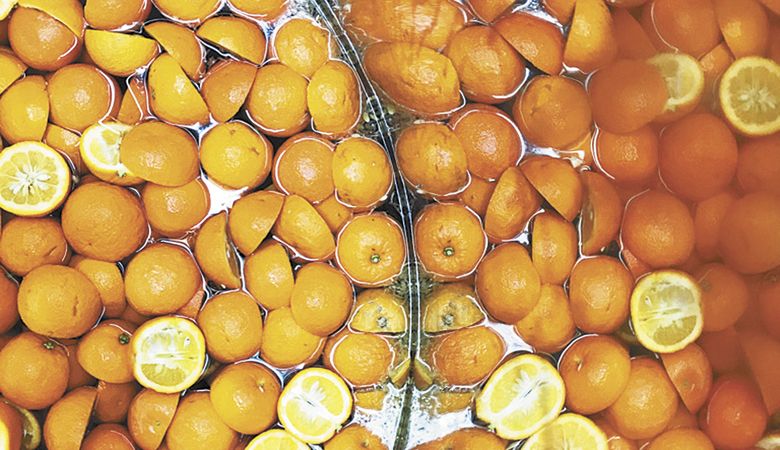Reviving the Apéritif
Archival breathes old life into new spirits
It wasn’t too long ago when most Americans could not distinguish apéritif from a bottle of medicine. Practically religion in places like Italy, the act of sipping something like vermouth or Calvados pre-meal in this country is still somewhat obscure. However, thanks to a growing band of producers like Portland’s Archival Spirits — combined with a collective palate increasingly curious — apéritif culture here is coming to life.
With a trajectory not unlike wine, especially here in the Pacific Northwest, it was only a couple of generations ago when Willamette Valley producers were playing trial and error with the riddle otherwise known as Pinot Noir. Today the region has come to terms with that varietal, along with scores more. This is now the home of outstanding sparkling wine, juicy Gamay Noir and radiant Semillon, among other flourishing residents.
Apéritif wines and sippers such as vermouth remain harder to find here than, say, Italy, but times have changed. Many bars and restaurants dabble in the stuff, and local labels like Imbue, Ransom and others have pushed these aromatic concoctions closer to the spotlight. Given the triumph of local vinification and the still-surging cocktail scene, perhaps this category will bask, one day soon, in the full beam of said spotlight.

Like many in the wine and spirits field, Archival owner Alex Morrow, a historian/educator-turned-spirits maker, found his way through fine dining. He worked in restaurants in the late ’90s in places like The Heathman Hotel in Portland. There, Morrow absorbed all things wine. “My favorite spot in the kitchen was the sauté station because I could listen to the nightly wine education while prepping for the dinner service,” he recalled. Working at the downtown icon offered additional perks, too; Morrow helped prepare dishes for the International Pinot Noir Celebration in McMinnville and took part in its tasting sessions.
Eventually, he traveled to the northern Italian region of Piedmont, renowned not only for its own wine culture, but vermouth. “I fell down a rabbit hole of these bitter and medicinal concoctions,” he admitted.
Combine that discovery with Morrow’s Ph.D. in history, and you have a transcript for an extensively researched product. Between teaching classes at the University of Washington, he’d rummage through archives, focusing on the pinnacle of cocktail culture in founding cities like Berlin, Paris and Turin. “The librarians thought my request for French winemaking manuals from the early 1900s was peculiar,” he said. “I just told them I was writing a lecture on café society in the Belle Epoque.”
The Vin d’Orange by Archival Spirits tips its cap to both the longstanding craft of vermouth as well as Oregon wine. Morrow calls it the culmination of a lot of trial, error and adaptation, not to mention sniffing around old documents and boozy manuals. “In my research, the first printed references to Vin d’Orange date back to at least 1780, though Provençal farmers have been combining wine, brandy and citrus for much longer,” he explained.
The apéritif wine comes in an eye-catching bottle, distinctive even among the most crowded bar shelves. The label pops, in a timeless kind of way. “We wanted something that was authentic and contemporary but called back to the classic vermouth labels of Italy and France,” Morrow said. A very geometric orange sits at the center of the label, surrounded by attractive typography. It’s the kind of bottle you hold onto even after it’s drained.
Morrow’s favorite accent is the band at the top of the bottle. It’s pulled from an old vermouth formula from the beginning of the 20th century. Beneath the cap is a drink made with a wine base. The latest batch sources Viognier from the Chehalem Mountains along with a bit of Chardonnay from the Eola-Amity Hills. “Historically, Muscat would be used for the base, but the range of excellent aromatic wines in Oregon — Gewürztraminer, Viognier, Riesling — give me lots of options,” he said.
The process itself is quite complex, beginning in February, when his team sources citrus from an organic farm in California. The harvest window for this variety of orange is tiny; when the fruit arrives, it’s sorted and cut by hand. After a six-to-eight week brandy soak, the fruit is removed and the steeping begins. Herbs and botanicals enter the fray for the following few months. “Each botanical requires a different soak time; some of the aromatics can be lost if we let them sit for too long,” Morrow said.
On the palate, it’s a zesty number, with punchy grapefruit and a pleasant pithy quality, an invigorating sipper with ample bitterness and even better splashed into a cocktail like an Old Fashioned or Negroni. It’s also extremely refreshing as a spritz — hit with some Prosecco — a deck-ready drink ideal for the summer.
Accompanying the bottle is a handy booklet of cocktail recipes demonstrating the flexibility of the product. It makes sense, given the complementary and collaborative nature of citrus. “It’s a natural substitute for things like Campari or Aperol,” Morrow noted. “But one might be surprised by how well it mixes with tequila and mezcal. I prefer to drink it while preparing dinner — in a glass with some ice and, perhaps, a splash of mineral water.”
Modeled upon tradition, Vin d’Orange honors the historical and gastronomical context of its creation. “It’s a true bitter apéritif, meant to prepare your senses before a good meal,” Morrow said. And more like it are coming, including the mysteriously named Digestif No. 5, built around Pinot Noir, fortified with brandy and aged with walnuts similar to Italian nocino. He says the formula for this upcoming offering was confided to him by a co-worker in a town near Turin.
We’ve yet to reach the golden era of apéritif culture in this country, but outfits like Archival are making it seem like a real possibility. Those who intrepidly approach wine — and food, in general — will find much to like about this vast family of drinks, the gateway to any good meal. Better still, we can now test the tradition with options made right here.










